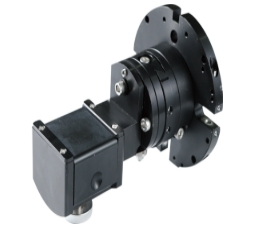
One machine adapts to multiple scenarios, doubling experimental efficiency
2025-04-24 16:08The multifunctional sample stage is a highly integrated experimental equipment mainly used in the fields of materials science, semiconductor manufacturing, electron microscopy analysis, etc. Its core features are modular design, multifunctional integration, and high-precision control.
一、 The core functions and structural characteristics of the multifunctional sample stage
1. Modular design of multifunctional sample stage:
Multiple functions are achieved through different module combinations, such as self rotation coupling module (speed 0~20 revolutions per minute, with zero limit), lifting module (standard stroke 50mm/100mm, customizable), heater module (maximum temperature up to 1100 ℃), etc.
Support DC/RF power supply connection to meet the needs of thin film growth, sample cleaning, or auxiliary film formation.
2. High precision control and sensors for multifunctional sample stage:
Equipped with temperature, pressure and other sensors, real-time monitoring of sample environmental parameters, and adjusting heating, cooling and other operations through the control system.
Some models integrate pneumatic baffle modules for easy operation.
3. Compatibility and adaptability of multifunctional sample stage:
Suitable for testing irregular samples such as trace powders, sheet materials, and large-sized samples, avoiding the damage caused by traditional cutting or grinding.
Supports sample sizes below 6 inches and customizable flange interfaces.
二、 Application Fields of Multi functional Sample Stand
1. Thin film technology for multifunctional sample stage: used for advanced thin film growth technologies such as MBE (molecular beam epitaxy), PLD (pulsed laser deposition), magnetron sputtering, as well as substrate annealing, high-temperature degassing and other processes.
2. Electron microscopy analysis of multifunctional sample stage:
Cold field scanning electron microscope: Fix the sample with long screws and adjust the conductivity with compatible brass washers.
TEM/FIB system: integrates in-situ delamination, nanoprobe testing, and TEM analysis to avoid contamination or damage caused by sample transfer.
3. Failure analysis of multifunctional sample stage: Integrating atomic site stripping, electrical testing and analysis processes in FIB and TEM systems to improve success rate and efficiency.
三、 Technical advantages of multifunctional sample stage
1. Integration and automation of multifunctional sample stage: reduces manual operation complexity through modular design, supports overall movement and precise positioning in vacuum environment.
2. High reliability of the multifunctional sample stage: using standard flange interfaces (such as CF50/CF40) to ensure sealing and compatibility.
3. Customization of multifunctional sample table: Heating material, stroke length, and sample holder type (such as 3-jaw bayonet type, bottom fork type) can be selected according to needs.
Overall, the multifunctional sample stage is a key equipment for material research and micro analysis, commonly used in X-ray diffraction instruments. Its value lies in functional integration, operational flexibility, and adaptability to complex experimental requirements. The specific selection needs to match the corresponding modules and performance parameters according to the actual application scenarios (such as thin film technology, electron microscopy analysis, or failure analysis).

